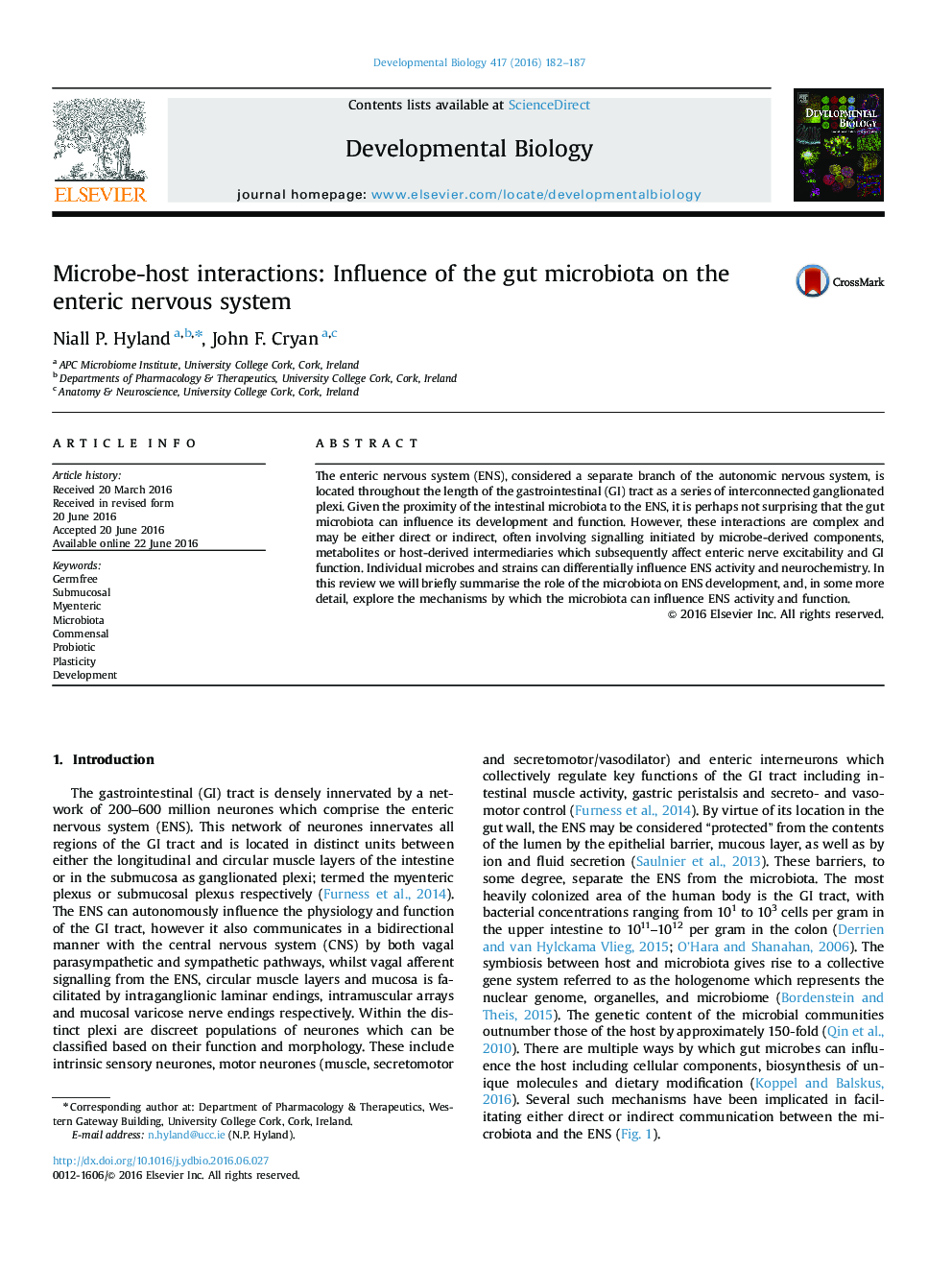| کد مقاله | کد نشریه | سال انتشار | مقاله انگلیسی | نسخه تمام متن |
|---|---|---|---|---|
| 5531784 | 1401814 | 2016 | 6 صفحه PDF | دانلود رایگان |
- Examines the impact of the gut microbiota on enteric nervous system development function and plasticity.
- Explores the utility of germ-free mice in the characterisation of microbe-enteric nervous system interactions.
- Discusses the mechanisms by which the microbiota interacts with the enteric nervous system.
The enteric nervous system (ENS), considered a separate branch of the autonomic nervous system, is located throughout the length of the gastrointestinal (GI) tract as a series of interconnected ganglionated plexi. Given the proximity of the intestinal microbiota to the ENS, it is perhaps not surprising that the gut microbiota can influence its development and function. However, these interactions are complex and may be either direct or indirect, often involving signalling initiated by microbe-derived components, metabolites or host-derived intermediaries which subsequently affect enteric nerve excitability and GI function. Individual microbes and strains can differentially influence ENS activity and neurochemistry. In this review we will briefly summarise the role of the microbiota on ENS development, and, in some more detail, explore the mechanisms by which the microbiota can influence ENS activity and function.
Journal: Developmental Biology - Volume 417, Issue 2, 15 September 2016, Pages 182-187
